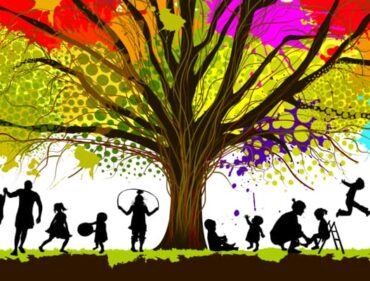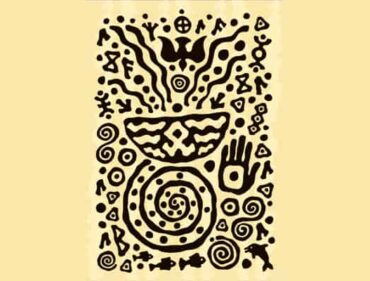Article: Tonglen – An Integrated Energy Medicine Point of View
By Joanna Foote Adler, PsyD, CHT
Editors’ Note: Joanna Adler, PsyD, CHT Joanna Adler, PsyD, CHT, is a Depth Hypnosis Practitioner, a licensed Clinical Psychologist and an Instructor at the Foundation of the Sacred Stream. She holds a doctorate degree in Clinical Psychology from the California Institute of Integral Studies, where she specialized in the study of Transpersonal Psychology and Family Psychology. Joanna has been working with individuals, couples, and families as a psychotherapist and spiritual counselor since 1993. She has trained extensively in the fields of Buddhist Psychology, Applied Shamanism, Energy Medicine, and Depth Hypnosis, and teaches nationally and internationally in these fields.
Joanna completed an efficacy study of the spiritual counseling model of Depth Hypnosis, which offers clear evidence of the efficacy of Depth Hypnosis in treating depression, anxiety, and PTSD, and raising well-being.
Much has been written on the practice of Tonglen, the Tibetan Buddhist meditation practice of giving and taking. Tonglen is a powerful and important practice in many of the schools of Buddhism. I would like to offer some thoughts to add to this literature from the perspective of Integrated Energy Medicine as it is taught at the Foundation of the Sacred Stream, which will hopefully help to focus this practice for western practitioners in a skillful way.
Let’s start by defining Tonglen. Tonglen is a meditative practice for cultivating love and compassion through giving and taking. The focus in this practice is to embrace (rather than reject) unwanted and painful aspects of experience, and to work to overcome fear and develop greater compassion for others. The opportunity here is to change the attitude towards pain and to open the heart as one visualizes dissolving pain. In this practice, one uses the breath in conjunction with a specific visualization. One visualizes or imagines taking in the pain and suffering of others on breathing in, and then visualizes breathing out love and peace for the other.
Tonglen is a practice said to help develop wisdom and compassion on both the relative and absolute levels of reality as they are understood in Buddhist philosophy. These levels are known as the Two Truths. Talking about these levels of reality gets us into deep philosophical water, but for the purposes here we can understand that the relative level of existence refers to the everyday ordinary world experienced as solid and “real.” The ultimate level of reality in Buddhism points to the understanding that reality is actually “empty” in that it is always changing, and that all things depend on or originate from the causes and conditions that came before them. Tonglen points us towards letting go, towards releasing the clinging to our sense of self and to the attachment held when one believes they are permanent beings. In different ways on the relative and absolute levels, Tonglen practice can reverse resistance to pain and help develop the enlightened mind qualities of equanimity, love, and compassion in the face of suffering. The concepts of relative and absolute levels of reality are helpful here in the exploration of how Tonglen practice works.
As the Founding Director at the Foundation of the Sacred Stream, Dr. Isa Gucciardi teaches courses of study in Applied Buddhist Psychology and Integrated Energy Medicine, among others. She teaches that one way to understand Tonglen is as an energy medicine practice.
In viewing Tonglen from the point of view of energy medicine, the movement of energy that happens as we visualize taking in the pain of others and giving back healing can be experienced as quite powerful and real (albeit on the relative level). While all is finally “empty” on the ultimate level, on the relative level we experience emotions. We can take on the energetic signature of others’ feelings and experiences, and others’ negative energies can become lodged in our own energetic system. Even if we understand that this is a transitory experience from the point of view of the ultimate level, in this moment on the relative level, energetic experiences regularly travel back and forth between people, and these energies can have both positive and negative valences that can enhance or disturb our experience.
With this understanding, Dr. Gucciardi teaches that it is important to be aware of how to be skillful with Tonglen practice, and to study what is needed to gain the wisdom offered here without causing harm in the process (however transitory this harm might be). One way this can be accomplished is through the cultivation of Bodhicitta.
Bodhicitta is an enlightened mind state of compassion, and the wish to relieve suffering for all beings. Some traditional Buddhist teachers in the west point to the importance of cultivating Bodhicitta before starting any more advanced practice like Tonglen, while others are more vague on this point.
One Tibetan teacher for example, Geshe Pema Dorje, was quite clear about the importance of cultivating Bodhicitta as a prerequisite to Tonglen, saying the proper container for Tonglen is always to first hold Bodhicitta. He said Tonglen should never be attempted before the orientation of Bodhicitta can be held in a stable way. In traditional practice, Bodhicitta is the ground from which practices like Tonglen should spring.
This emphasis is not made by all traditional teachers in the west, however. Perhaps one reason for this is that in Tibet, Nepal, and other culturally Buddhist areas, Bodhicitta is assumed as a prerequisite practice. Its necessity therefore may not always be spelled out clearly for westerners who were not brought up with Bodhicitta.
So, for those of us not brought up in a culture that emphasizes Bodhicitta, how do we begin to cultivate it?
The orientation of Bodhicitta is to focus single-mindedly on holding compassion in the heart, the wish to relieve suffering. This can be done by visualizing a deity in one’s heart, the light of compassion, or even simply holding the sincere wish that pain be relieved. From the point of view of Integrated Energy Medicine, a field of energy is created through this kind of focus on compassion, which can be felt as a loving, positive, high-vibrational state. This field of positive energy can create a transformational container for suffering – for our own suffering or that of others. It is imperative to properly meet the pain that is drawn in on the breath in this way, to bring it into a transformational field of light. Here the suffering can be transmuted, its form changed in a positive way, and one can then breathe out to others this transformed energy in the form of compassion, hope and love.
This is true compassion, that all involved are being healed in the process. No one is unwittingly harmed – even you as the practitioner. It is not helpful to fall into the pain of another or to get underwater in the experience of another’s suffering, which is the kind of thing that can happen for western people who have not been schooled in the proper approach to Tonglen. The point is to learn to hold love and compassion in the face of suffering, and to bring the suffering into the field of transformative energy that the love/compassion can provide.
As we visualize transforming pain into light, and suffering into healing, we see the ultimate nature of things as ever-changing and impermanent. The purpose of Tonglen is not to bring another’s suffering into one’s own system, but to see the ephemeral changing nature of all that is. One’s own fear is transformed in the process, and one can learn to hold everything (including oneself) in love and compassion.
Over time, the practice of Tonglen can help to deepen one’s ability to be hopeful, resourced, loving, compassionate, and skillful in the face of pain and suffering. It is important to protect these qualities of enlightened mind, not invade them inappropriately on the relative level with pain or negativity. The goal is not to compromise the relative level to learn the lessons of the absolute, but to allow the wish to relieve the suffering of others to be helpful and harmless to all involved.
LIKE THIS ARTICLE? SIGN UP FOR FREE UPDATES!



